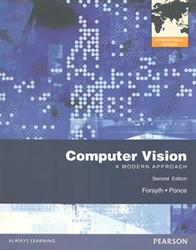Advanced Robotic Vehicles Programming: An Ardupilot and Pixhawk Approach
暫譯: 進階機器人車輛程式設計:Ardupilot 與 Pixhawk 方法
Mendoza-Mendoza, Julio Alberto, Gonzalez-Villela, Victor Javier, Sepulveda-Cervantes, Gabriel
- 出版商: Apress
- 出版日期: 2020-02-04
- 售價: $1,980
- 貴賓價: 9.5 折 $1,881
- 語言: 英文
- 頁數: 433
- 裝訂: Quality Paper - also called trade paper
- ISBN: 1484255305
- ISBN-13: 9781484255308
-
相關分類:
機器人製作 Robots
-
相關翻譯:
無人機編程實戰:基於 ArduPilot 和 Pixhawk (Advanced Robotic Vehicles Programming: An Ardupilot and Pixhawk Approach) (簡中版)
立即出貨 (庫存=1)
買這商品的人也買了...
-
 $1,274The Intel Microprocessors, 8/e (IE-Paperback)
$1,274The Intel Microprocessors, 8/e (IE-Paperback) -
 $1,098Neural Networks and Learning Machines, 3/e (IE-Paperback)
$1,098Neural Networks and Learning Machines, 3/e (IE-Paperback) -
 $1,225Computer Vision: A Modern Approach, 2/e (IE-Paperback)
$1,225Computer Vision: A Modern Approach, 2/e (IE-Paperback) -
 Binary Hacks -- 駭客秘傳技巧一百招
Binary Hacks -- 駭客秘傳技巧一百招$580$458 -
 $403自製編程語言
$403自製編程語言 -
 兩周自製腳本語言
兩周自製腳本語言$354$336 -
 $352自己動手構造編譯系統:編譯、彙編與鏈接
$352自己動手構造編譯系統:編譯、彙編與鏈接 -
 $1,519Fundamentals of Database Systems, 7/e (IE-Paperback)
$1,519Fundamentals of Database Systems, 7/e (IE-Paperback) -
 Computer Systems: A Programmer's Perspective, 3/e (IE-Paperback)
Computer Systems: A Programmer's Perspective, 3/e (IE-Paperback)$2,980$2,831 -
 Digital Systems: Principles and Applications, 12/e (GE-Paperback)
Digital Systems: Principles and Applications, 12/e (GE-Paperback)$2,500$2,450 -
 為你自己學 Ruby on Rails
為你自己學 Ruby on Rails$480$379 -
 $454MATLAB/Simulink 系統模擬
$454MATLAB/Simulink 系統模擬 -
 Foundations of Computer Science, 4/e (Paperback)
Foundations of Computer Science, 4/e (Paperback)$1,280$1,254 -
 數位邏輯電路實習, 4/e
數位邏輯電路實習, 4/e$430$387 -
 Digital Design: With an Introduction to the Verilog HDL, VHDL, and SystemVerilog, 6/e (GE-Paperback)
Digital Design: With an Introduction to the Verilog HDL, VHDL, and SystemVerilog, 6/e (GE-Paperback)$1,380$1,352 -
 Algorithms for Optimization (Hardcover)
Algorithms for Optimization (Hardcover)$1,680$1,646 -
 Nonlinear Systems, 3/e (IE-Paperback)
Nonlinear Systems, 3/e (IE-Paperback)$1,085$1,085 -
 Deep Learning - Hardware Design
Deep Learning - Hardware Design$680$646 -
 Game Theory, 2/e (Paperback)
Game Theory, 2/e (Paperback)$3,230$3,069 -
 深度強化式學習 (Deep Reinforcement Learning in Action)
深度強化式學習 (Deep Reinforcement Learning in Action)$1,000$790 -
 Advanced Engineering Mathematics, 7/e (Paperback)
Advanced Engineering Mathematics, 7/e (Paperback)$1,420$1,392 -
 $1,4883D Graphics Rendering Cookbook: A comprehensive guide to exploring rendering algorithms in modern OpenGL and Vulkan (Paperback)
$1,4883D Graphics Rendering Cookbook: A comprehensive guide to exploring rendering algorithms in modern OpenGL and Vulkan (Paperback) -
 A First Course in the Finite Element Method, Enhanced Edition, SI Version, 6/e (Paperback)
A First Course in the Finite Element Method, Enhanced Edition, SI Version, 6/e (Paperback)$1,440$1,411 -
 Finite Element Simulations with ANSYS Workbench 2023 (附多媒體光碟)
Finite Element Simulations with ANSYS Workbench 2023 (附多媒體光碟)$880$836 -
 LLM 大型語言模型的絕世祕笈:27路獨步劍法,帶你闖蕩生成式 AI 的五湖四海 (iThome鐵人賽系列書)
LLM 大型語言模型的絕世祕笈:27路獨步劍法,帶你闖蕩生成式 AI 的五湖四海 (iThome鐵人賽系列書)$650$507
相關主題
商品描述
Learn how to program robotic vehicles with ardupilot libraries and pixhawk autopilot, both of which are open source technologies with a global scope. This book is focused on quadcopters but the knowledge is easily extendable to three-dimensional vehicles such as drones, submarines, and rovers.
Pixhawk and the ardupilot libraries have grown dramatically in popularity due to the fact that the hardware and software offer a real-time task scheduler, huge data processing capabilities, interconnectivity, low power consumption, and a global developer support.
This book shows you how take your robotic programming skills to the next level. From hardware to software, Advanced Robotic Vehicles Programming links theory with practice in the development of unmanned vehicles. By the end of this book, you’ll learn the pixhawk software and ardupilot libraries to develop your own autonomous vehicles.
What You'll Learn
- Model and implement elementary controls in any unmanned vehicle
- Select hardware and software components during the design process of an unmanned vehicle
- Use other compatible hardware and software development packages
- Understand popular scientific and technical nomenclature in the field
- Identify relevant complexities and processes for the operation of an unmanned vehicle
Who This Book Is For
Undergraduate and graduate students, researchers, makers, hobbyists, and those who want to go beyond basic programming of an Arduino for any kind of robotic vehicle.
商品描述(中文翻譯)
學習如何使用 Ardupilot 函式庫和 Pixhawk 自動駕駛儀來編程機器人車輛,這兩者都是具有全球範圍的開源技術。本書專注於四旋翼飛行器,但所學知識可以輕鬆擴展到三維車輛,如無人機、潛艇和探測車。
由於硬體和軟體提供實時任務調度器、強大的數據處理能力、互聯互通、低功耗以及全球開發者支持,Pixhawk 和 Ardupilot 函式庫的受歡迎程度大幅上升。
本書將指導您如何將機器人編程技能提升到更高的水平。從硬體到軟體,《進階機器人車輛編程》將理論與實踐相結合,幫助您開發無人駕駛車輛。在本書結束時,您將學會使用 Pixhawk 軟體和 Ardupilot 函式庫來開發自己的自主車輛。
您將學到的內容:
- 在任何無人駕駛車輛中建模和實現基本控制
- 在無人駕駛車輛的設計過程中選擇硬體和軟體組件
- 使用其他兼容的硬體和軟體開發套件
- 理解該領域中流行的科學和技術術語
- 確定無人駕駛車輛運作的相關複雜性和過程
本書適合對象:
本科生和研究生、研究人員、創客、愛好者,以及那些希望超越基本 Arduino 編程以開發各類機器人車輛的人士。
作者簡介
Julio Mendoza-Mendoza earned his computing doctoral degree at CIC IPN in 2016, where he specialized in underactuated robotics, UAS, and intelligent and nonlinear control. He also earned his advanced-technologies master degree and mechatronics-engineering bachelor at UPIITA IPN, in 2011 and 2008 respectively. Currently, Julio is working on 5 patents related to his research field and developing his flying serial-robot manipulator theory at FI UNAM through his postdoctoral 2017 DGAPA grant.
V. J. Gonzalez-Villela received his B.Eng. degree in Mechanical and Electrical Engineering and the M.Eng. degree in Electrical Engineering in 1987 and 1993, respectively, from the National Autonomous University of Mexico (UNAM), and a Ph.D. degree in Kinematics, Dynamics, and Nonlinear Systems applied to Mobile Robot Modelling and Control from Loughborough University, Loughborough, UK, in 2006. He is currently a Titular Professor in the Department of Mechatronics Engineering, UNAM. His research focuses on Mobile, Hybrid and Adaptive Robots, and Artificial Intuition.
作者簡介(中文翻譯)
Julio Mendoza-Mendoza於2016年在CIC IPN獲得計算機博士學位,專攻於欠驅動機器人、無人機系統(UAS)以及智能和非線性控制。他於2011年和2008年分別在UPIITA IPN獲得先進技術碩士學位和機電工程學士學位。目前,Julio正在進行與其研究領域相關的5項專利,並透過2017年DGAPA的博士後獎學金在FI UNAM發展其飛行串列機器人操作理論。
V. J. Gonzalez-Villela於1987年和1993年分別在墨西哥國立自治大學(UNAM)獲得機械與電氣工程學士學位和電氣工程碩士學位,並於2006年在英國拉夫堡大學獲得應用於移動機器人建模與控制的運動學、動力學及非線性系統博士學位。他目前是UNAM機電工程系的正教授,研究重點為移動、混合和自適應機器人,以及人工直覺。































